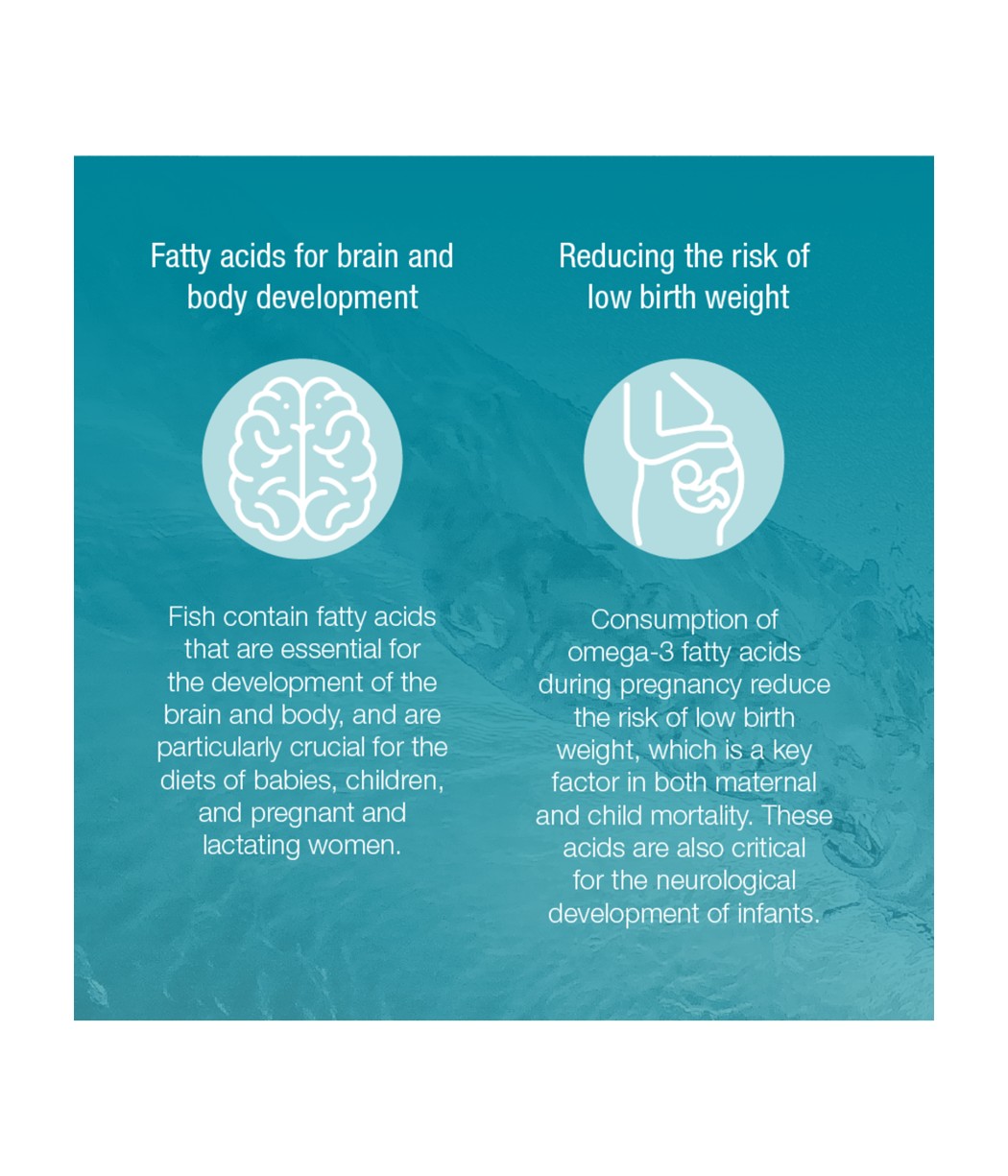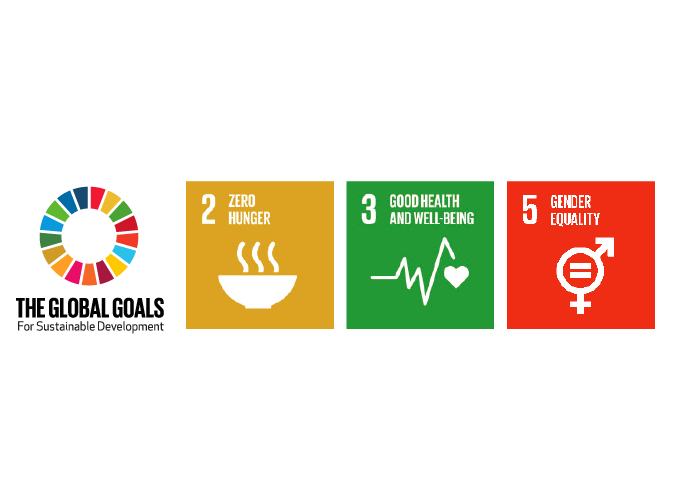
Even when consumed in small quantities, fish represents a nutritionally important part of many people’s diets, particularly in developing countries. It is a vital source of protein and micronutrients, and improves the quality of protein in largely vegetable and starch-based diets by providing essential amino acids.
Fish is rich in zinc, phosphorus, magnesium, selenium, and contains vitamins A, D and B2 (riboflavin), while marine fish is a good source of iodine and omega 3 fatty acids. Many of these vital nutrients are only found in small amounts, if at all, in staple foods such as maize, rice and cassava which make up the bulk of people’s diets in developing countries.
Fish are an indispensable source of these nutrients for many people, and small low-value fish, which are largely consumed by the rural poor, provide more minerals than the same quantity of meat or large fish, as they are consumed whole, with the bones intact. Fish also contain fatty acids that are essential for the development of the brain and body, and are particularly crucial for the diets of babies, children, and pregnant and lactating women.
Consumption of omega-3 fatty acids during pregnancy reduce the risk of low birth weight, which is a key factor in both maternal and child mortality. These acids are also critical for the neurological development of infants, and are found almost exclusively in fish, making the consumption of fish during lactation and pregnancy especially important.


